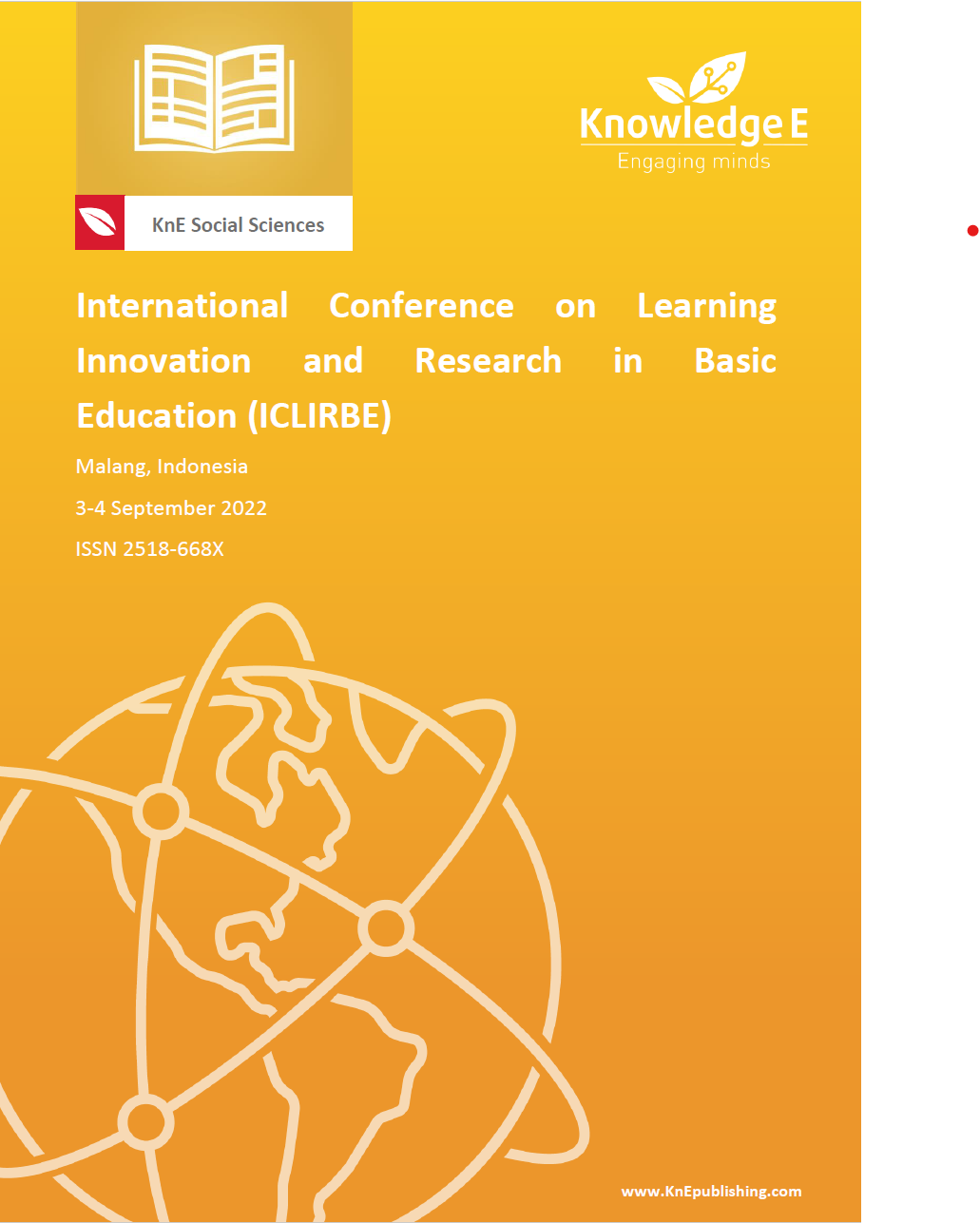Teachers' Perspectives: Factors Causing Negative Personality Development in Students
DOI:
https://doi.org/10.18502/kss.v8i8.13282Abstract
The psychology and personality of pupils or children in elementary school became one of the interesting issues to work on. This issue relates to the children’s mental health and their personality development. Students in the elementary school are capable of absorbing everything around them, just like a sponge. Therefore, a good example of personality and the other way around can make up the students’ personality development, starting from an early age until they are adult enough to make their own personality through their wise sight. This case study aims to describe the students’ personalities; focusing on the factors that caused the development of negative attitudes. The results showed that there are four points or factors that developed negative attitudes: 1) parents 2) technology 3) friends 4) bullying.
Keywords: attitudes psychology, social, elementary students
References
[2] Diwyarthi NDMS, Putri D, Listriani DA, Ismainar H, Hasbi I, Darmawan IPA, et al. Psikologi Sosial; widina media utama press, Bandung. 2021.
[3] Johann VE, Karbach J. The relations between personality, components of executive functions, and intelligence in children and young adults. Psychol Res. 2021;1-14.
[4] Slobodskaya HR. Personality development from early childhood through adolescence. Pers Individ Differ. 2021;172:110596.
[5] Piovesan M, Willadsen H. Risk preferences and personality traits in children and adolescents. J Econ Behav Organ. 2021;186:523-532.
[6] Eysenck HJ, Cookson D. Personality in primary school children: 1.—Ability and achievement. Br J Educ Psychol. 1969;39(2):109-122.
[7] Maqsud M. Personality and academic attainment of primary school children. Psychol Rep. 1980;46(3_suppl):1271-1275.
[8] Conger KJ, Neppl TK, Scaramella L. Special section on personality development: Testing environmental and genetic associations across generations. Dev Psychol. 2021;57(2):139.
[9] Abbott T. Social and personality development. Routledge; 2021.
[10] Digman JM, Shmelyov AG. The structure of temperament and personality in Russian children. J Pers Soc Psychol. 1996;71(2):341.
[11] Creswell JW, Hanson WE, Clark Plano VL, Morales, A. Qualitative research designs: Selection and implementation. Couns Psychol. 2007;35(2):236-264.
[12] Hanurawan F. Metode penelitian kualitatif dalam ilmu psikologi. Surabaya: KPKM Universitas Airlangga; 2012b.
[13] Herrera S, Cruz C, Ramírez Y, Cisternas L. Conceptual process design for Boric Acid: A case study for engineering education. In Computer aided chemical engineering (Vol. 38). Elsevier; 2016. p. 1437-1442.
[14] Hanurawan F. Ilmu Psikologi Untuk Pemecahan Masalah-Masalah Kemanusiaan. Pidato Pengukuhan Jabatan Guru Besar UM. 2015.
[15] Widodo GS, Hariyono H, Hanurawan F. Persepsi guru tentang kenakalan siswa: Studi kasus di sekolah dasar “Raja Agung”. Jurnal Pendidikan dan Pembelajaran ( JPP). 2017;23(2):142-153.
[16] Brim OG. Personality development as role-learning. In Personality development in children. University of Texas Press; Austin. 2021. p. 127-160. Edited by: Ira Iscoe and Harold W. Stevenson
[17] Anaya B, Pérez-Edgar K. Personality development in the context of individual traits and parenting dynamics. New Ideas Psychol. 2019;53:37-46.
[18] Krupic D, Rucevic S, Vuckovic S. From parental personality over parental styles to children psychopathic tendencies. Curr Psychol. 2020;1-10.
[19] Dyson MW, Olino TM, Durbin CE, Goldsmith HH, Klein DN. The structure of temperament in preschoolers: A two-stage factor analytic approach. Emotion. 2012;12(1):44.
[20] Bakhotskaya M. Influence of gadgets on communicative competence of older preschool children. In Child in the Digital World (p. 139-140). 2021.The International Psychological Forum, Russia.
[21] Hanurawan F. Aplikasi Psikologi Sosial Terhadap Perilaku Penggunaan Internet. In Seminar Nasional Psikologi UM (Vol. 1, No. 1). 2019.
[22] Laili U. Influence of gadget on social personal of early childhood. In Proceeding Surabaya International Health Conference 2017 (Vol. 1, No. 1). 2017, July.
[23] Al Majali S. The digital world for children and its relationship with personality disorders: Exploring emerging technologies. Int J Emerg Technol Learn (iJET). 2020;15(1):213-221.
[24] Jaccard J, Blanton H, Dodge T. Peer influences on risk behavior: An analysis of the effects of a close friend. Dev Psychol. 2005;41(1):135.
[25] Barry CM, Wentzel KR. Friend influence on prosocial behavior: The role of motivational factors and friendship characteristics. Dev Psychol. 2006;42(1):153.
[26] Adams RE, Santo JB, Bukowski WM. The presence of a best friend buffers the effects of negative experiences. Dev Psychol. 2011;47(6):1786.
[27] Connolly I, O’Moore M. Personality and family relations of children who bully. Pers Individ Differ. 2003;35(3):559-567.

